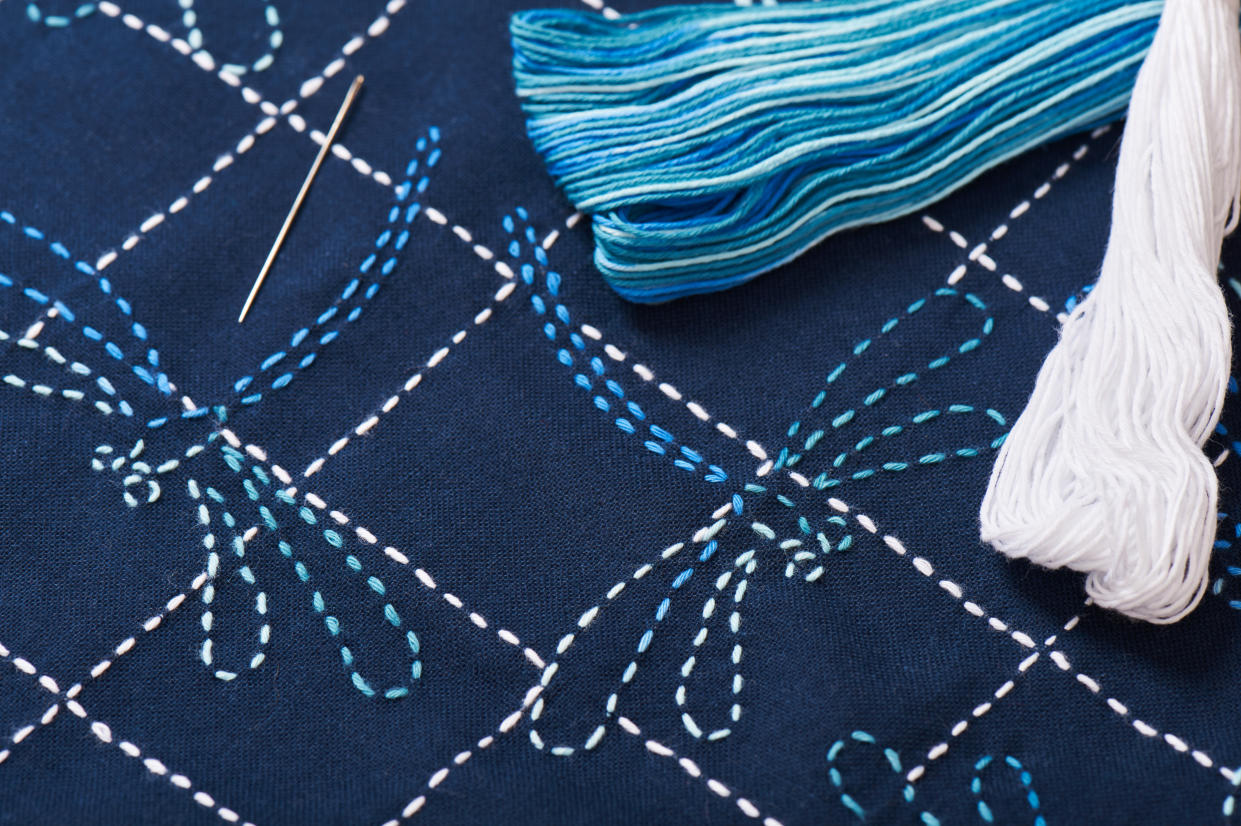Mend your clothes beautifully with sashiko and show off your sustainable credentials

SINGAPORE — Although many of us know that we need to stop buying so many clothes due to the issues of sustainability, what do you do if your clothes start wearing out? Well, you keep calm and mend them!
Our mothers and grandmothers all used to mend their clothes rather than just throwing them out. Partially because they couldn’t afford to buy new clothes every week (or every day like we do) but also because they often valued their garments for the quality of the fabric, the fit and cut, or because they held special memories.
We too, should be caring more about our clothes, treasuring them and reusing them for many more years than we do now.
And the best way to do so? Learn to mend them properly.
READ MORE:
What is ‘clean beauty’ and should you be using it
Are you part of the new NOLO movement?

Turn your hand to ‘sashiko’
Mending and patching clothes is a hot new trend in the ‘slow fashion’ or sustainable fashion movement, and one of the prettiest ways to do it is with the traditional Japanese skill of ‘sashiko’.
Traditional sashiko designer and trainer Miho Takeuchi, is now based in the United States, explains that the technique comes from poor Japanese communities in the Edo period.
It was originally developed to mend and patch clothing, bedding and other household textiles since they were homespun from plants like hemp and wisteria and were hard to make new. After the Edo period the sashiko technique moved towards the more decorative designs used on the surface of fabrics that it is now known for today.
While the true use of sashiko is to add patches and to strengthen worn fabrics on existing clothing, there is also a craft version which simply uses the stitching technique to decorate things like coasters and wall-hangings.
Sashiko is about making tears and damage look beautiful and to add strength and character to your clothes. It’s particularly good for old pairs of jeans, as sashiko thread tends to be a bit thicker than usual thread - more like embroidery thread - so it works well on heavier, cotton fabrics.
For finer fabrics like silks, for example, you can see silk embroidery threads or even metallic thread being used to create the delicate sashiko stitches.
It’s not only the Japanese that have a dedicated skill for beautiful, visible mending. In Holland there is a group called Golden Joinery that uses gold thread for visible mending that adds a luxurious touch to garments.
Even some major fashion brands like Eileen Fisher, use the concept of visible mending to extend the lifecycle of garments. Its Renew programme buys back customers garments then mends, resews and resells them as part of the brand’s circular production system.
The ‘visible mending’ movement is also all over social media platforms with hashtags like #visiblemending #mending and #sashiko; it has turned into a fun, creative community of people who are interested in treating their clothes, and the environment well.
Singapore textile artist Agatha ‘Agy’ Lee has a fantastic example of how you can repair your favourite pieces of clothing using the sashiko technique. Ms Lee says her “textile work has diverged since then and is more focused on slowing down and reconnecting with nature and yourself through stitch meditation and surface design”; another benefit of taking up the needle obviously.
A post shared by Agatha "Agy" - Textile Artist (@agytextileartist) on
While mending our clothes with something as visible and beautiful as sashiko is great for those of us who are better off, as it’s a way to make a statement about how we want to consume more consciously and also be more sustainable with our fashion, for some people mending is necessary because they can’t afford new clothes.
It’s something to remember if you have the confidence to wear mended clothes; sashiko and visible mending was once and still is, often about necessity, but that doesn’t mean we can’t proudly mend our favourite clothes and wear them with pride too.
Learn to sew in Singapore
20 Joo Chiat Rd, #02-08, Singapore 427357
Phone: +65 9185 7267
South Bridge Rd, #02-01 258A, Singapore 058807
Phone: +65 8139 7787
333 Kreta Ayer Rd, #02-32, Singapore 080333
Phone: +65 8777 9924
24 Sin Ming Lane, Midview City #08-108, Singapore 573970
Sewing.sg @ Clementi (by Ban Soon)
Clementi Ave 3, #01-328 Block 431, Singapore 120431
Phone: +65 6776 3253
Workshop that teaches sashiko as a craft, not just for mending

